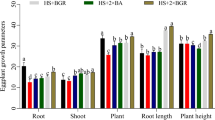Abstract
Sancassania (Caloglyphus) berlesei (Michael) is a cosmopolitan and free-living mite that inhabits soil as well as laboratory colonies of insects and fungi and may have a role as a biocontrol agent of nematodes. In this study, we investigated the effects of temperature on the development, reproduction, and food consumption of S. berlesei fed egg masses of root-knot nematodes, Meloidogyne spp., an important group of agricultural pests. Mites were reared at 20, 25 or 30 °C in the dark. The mites could feed on the nematode egg masses, and their developmental time decreased at higher temperatures. Time from the egg to adult was similar in females and males reared at the same temperature. Adult females lived longer than males at 25 °C, but not at 20 or 30 °C. Generally, females showed a higher rate of food consumption than males. Females laid the largest number of eggs at 20 and 25 °C (199.7 and 189.8 eggs/female, respectively), but the intrinsic rate of natural increase was highest at 30 °C (r m = 0.29). In comparing our data with previous reports, we noted that S. berlesei that fed on egg masses of root-knot nematodes showed a longer developmental time and a lower reproductive rate than Sancassania mites that fed on other diets. Nonetheless, the relatively high value of r m (e.g., at 25 and 30 °C) suggests that this mite may have certain advantages as a biocontrol agent of root-knot nematodes.
Similar content being viewed by others
References
Bilgrami AL (1994) Predatory behaviour of a nematode feeding mite Tyrophagus putrescentiae (Sarcoptiformes: Acaridae). Fund Appl Nematol 17:293–297
Birch LC (1948) The intrinsic rate of natural increase of an insect population. J Anim Ecol 17:15–26
Cakmak I, Ekmen ZI, Karagoz M, Hazir S, Kaya HK (2010) Development and reproduction of Sancassania polyphyllae (Acari: Acaridae) feeding on entomopathogenic nematodes and tissues of insect larvae. Pedobiologia 53:235–240
Cakmak I, Karagoz M, Ekmen ZI, Hazir S, Kaya HK (2011) Life history of Sancassania polyphyllae (Acari: Acaridae) feeding on dissected tissues of its phoretic host, Polyphylla fullo (Coleoptera: Scarabaeidae): temperature effects. Exp Appl Acarol 53:41–49
Chmielewski W (2003) Effect of buckwheat sprout intake on population increase in Caloglyphus berlesei (Michael) (Acari: Acaridae). Fagopyrum 18:85–88
Chmielewski W (2009) Phoretic mites (Acarina) on earwigs, Forficula auricularia L. (Insecta, Dermaptera), found in apiaries. J Apic Sci 53:75–80
Cross EA, Bohart GE (1990) Notes on the life history of Sancassania boharti (Acari: Acaridae) and its relationship to the alkali bee, Nomia melanderi (Hymenoptera: Halictidae). J Kans Entomol Soc 63:603–610
Daneshvar H, Rodriguez JG, Rodriguez LD (1977) Monoxenic culture of Caloglyphus berlesei (Acarina: Acaridae) on fungi. J Invertebr Pathol 30:175–180
Ekmen ZI, Hazir S, Cakmak I, Ozer N, Karagoz M, Kaya HK (2010) Potential negative effects on biological control by Sancassania polyphyllae (Acari: Acaridae) on an entomopathogenic nematode species. Biol Control 54:166–171
El-Sherif AG, Ismail AF (2009) Integrated management of Meloidogyne incognita infecting soybean by certain organic amendments, Bacillus thuringiensis, Trichoderma harzianum and oxamyl with reference to NPK and total chlorophyll status. Plant Pathol J 8:159–164
Eraky SA, Osman MA (2008) Some biological aspects and life table parameters of Caloglyphus manure Eraky & Osman (Acaridida: Acaridae) fed on different kinds of food. Acarines 2:45–48
Gerson U, Smiley RL, Ochoa R (2008) Mites (Acari) for pest control. Wiley, New York
Hughes AM (1976) The mites of stored food and houses. Technical Bulletin no. 9 (2nd edn). Ministry of Agriculture, Fisheries and Food, London
Karagoz M, Gulcu B, Cakmak I, Kaya HK, Hazir S (2007) Predation of entomopathogenic nematodes by Sancassania sp. (Acari: Acaridae). Exp Appl Acarol 43:85–95
Krantz GW (1978) A manual of acarology. Oregon State University Bookstores, Corvallis
Linford MB, Oliviera JM (1938) Potential agent of biological control of plant parasitic nematodes. Phytopathology 28:14
Lotka AJ (1924) Elements of physical biology. Williams and Wilkins, Baltimore
Meyer JS, Igersoll CG, MacDonald LL, Boyce MS (1986) Estimating uncertainty in population growth rates: jack-knife vs. bootstrap techniques. Ecology 67:1156–1166
Moens M, Perry RN, Starr JL (2009) Meloidogyne species—a diverse group of novel and important plant parasites. In: Perry RN, Moens M, Starr JL (eds) Root-knot nematodes. CABI Publishing, Wallingford, pp 1–17
Muraoka M, Ishibashi N (1976) Nematode-feeding mites and their feeding behaviour. Appl Entomol Zool 11:1–7
Rodriguez JG, Stepien ZA (1973) Biology and population dynamics of Caloglyphus berlesei (Michael) (Acarina: Acaridae) in xenic diet. J Kans Entomol Soc 46:176–183
Sell P (1988) Caloglyplus sp. (Acarina: Acaridae) an effective nematophagous mite on root-knot nematode (Meloidogyne spp.). Nematologica 34:246–248
Timms S, Ferro DN, Emberson RM (1981) General biology and nomenclature of Sancassania berlesei (Michael). Acarologia 22:385–390
Walia KK, Mathur S (1995) Predatory behaviour of two nematophagous mites, Tyrophagus putrescentiae and Hypoaspis calcuttaensis on root-knot nematode, Meloidogyne javanica. Nematol Mediterr 23:255–262
Walter DE, Hudgens RA, Freckman DW (1986) Consumption of nematodes by fungivorous mites Tyrophagus spp. (Acarina: Astigmata: Acaridae). Oecologia 70:357–361
Walter DE, Hunt HW, Elliot ET (1988) Guilds or functional groups? An analysis of predatory arthropods from a shortgrass steppe soil. Pedobiologia 31:247–260
Walter DE, Kaplan DT, Davis EL (1993) Colonization of greenhouse nematode cultures by nematophagous mites and fungi. J Nematol 25:789–794
Acknowledgments
We thank Dr. S.A. Eraky of the Plant Protection Department, Faculty of Agriculture, Assiut University, Egypt, for identifying the mite species and Dr. H. Amano of Kyoto University, Japan, for reviewing an early draft of this manuscript. We also thank anonymous reviewers for their helpful suggestions.
Author information
Authors and Affiliations
Corresponding author
Rights and permissions
About this article
Cite this article
Abou El-Atta, D.A.EM., Ghazy, N.A. & Osman, M.A. Effects of temperature on the life-history traits of Sancassania (Caloglyphus) berlesei (Acari: Astigmatina: Acaridae) feeding on root-knot nematodes, Meloidogyne spp. (Nematoda: Meloidogynidae). Exp Appl Acarol 64, 299–307 (2014). https://doi.org/10.1007/s10493-014-9826-7
Received:
Accepted:
Published:
Issue Date:
DOI: https://doi.org/10.1007/s10493-014-9826-7




